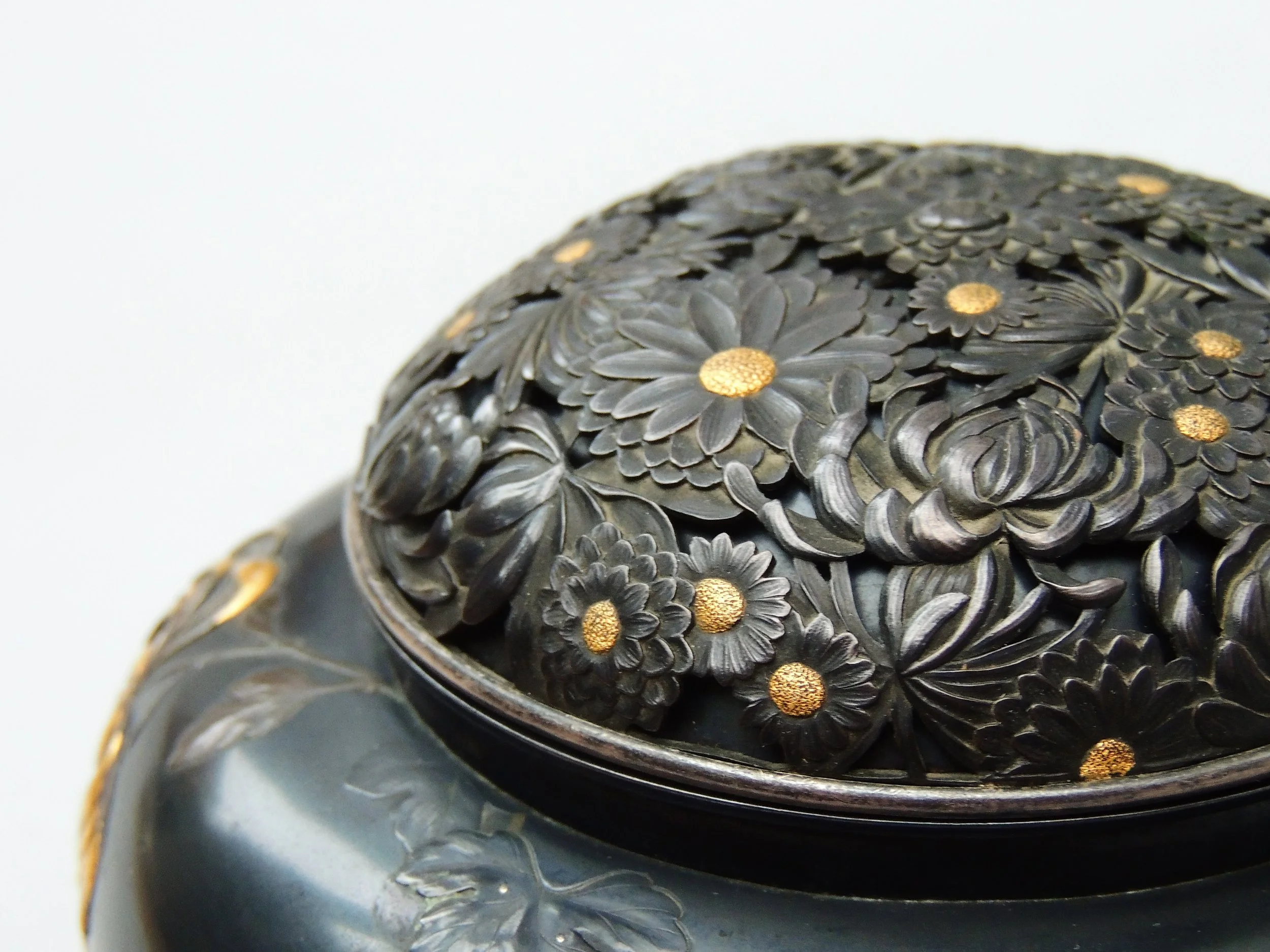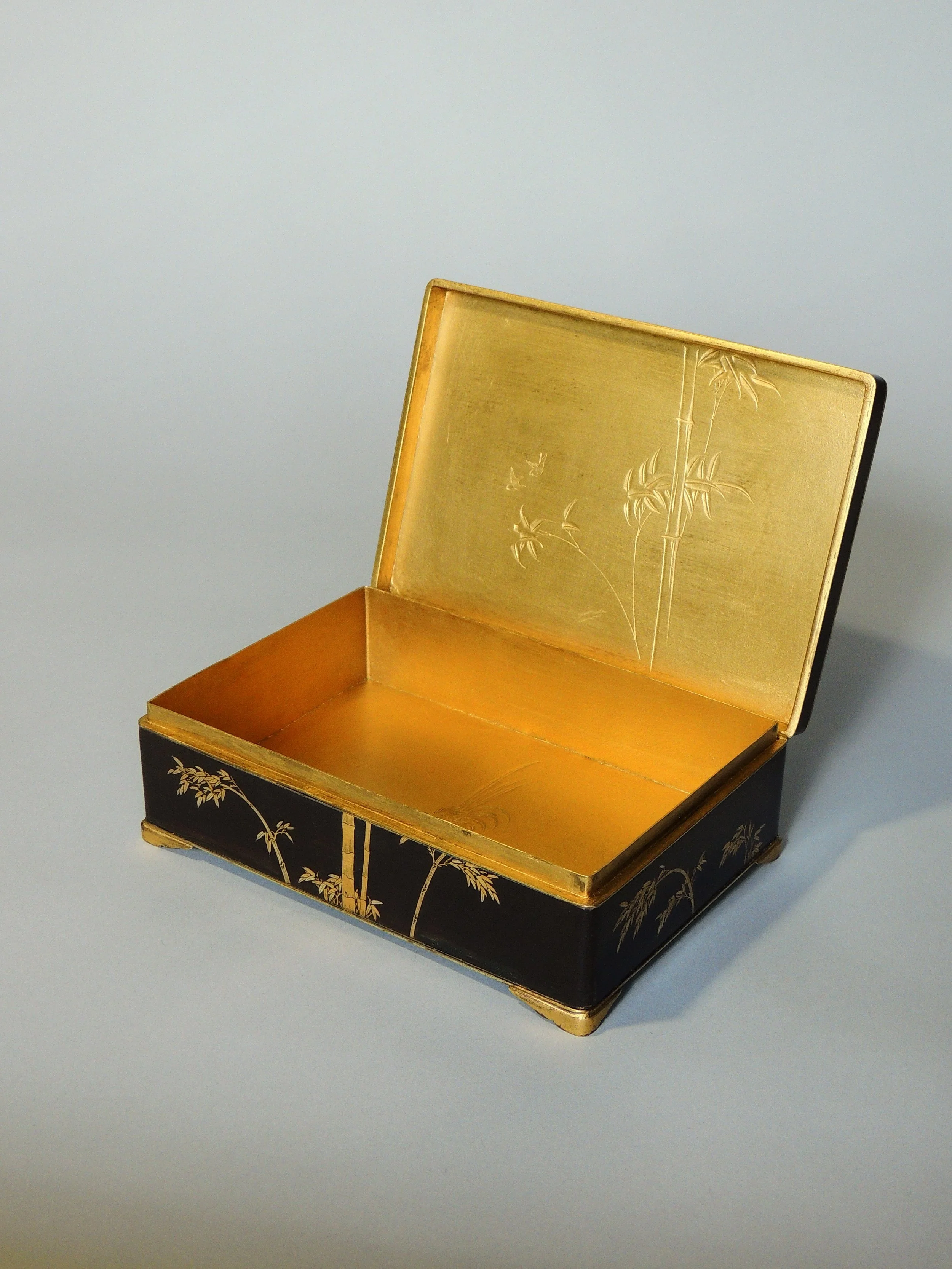Toshishige
Meiji period, 19/20th century
1868-1912
Koro
A stunning koro (incense burner) in shakudo, shibuichi, gold and silver. Decorated in chiselled relief chrysanthemums of open flowers and closed buds, the cover in densely overlapping chrysanthemum flower heads and silver inner lining.
This koro artist was Toshishige who has produced it for the well-known Nogawa company who specialised in metalwork for the export market.
Signed Toshishige Koku, Nogawa company
Size 133mm x 105mm







